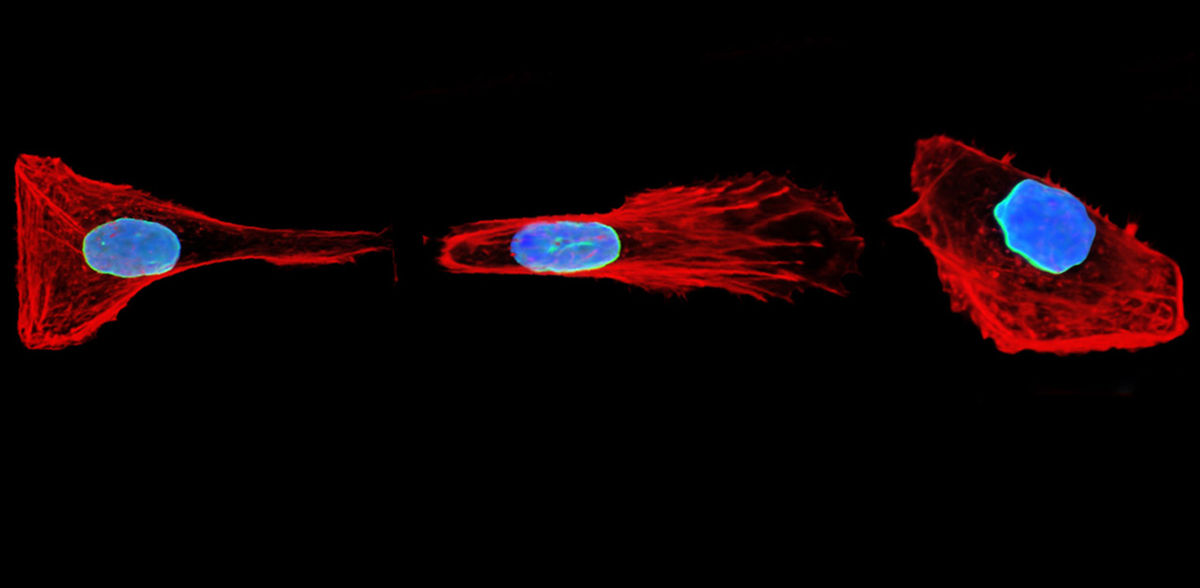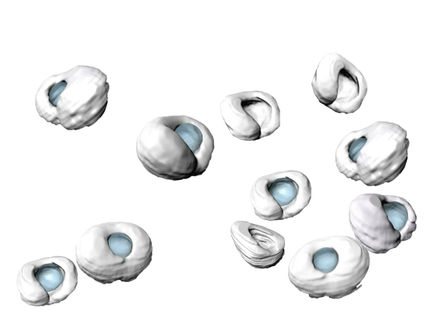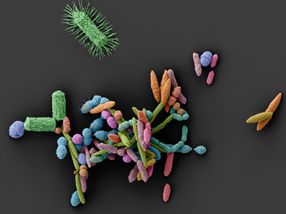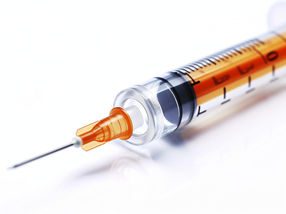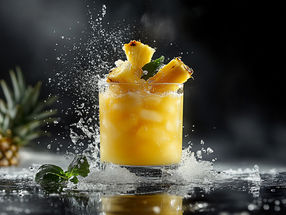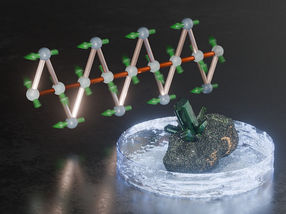Cellular memory: How cells move cleverly through the body
Advertisement
cells migrate through the body to heal wounds, defend against infections or when cancer spreads. In doing so, they often have to squeeze through narrow spaces. Researchers have now discovered that cells have a kind of memory. They remember how they passed through such narrow spaces in the past and can therefore move quickly and skillfully through structurally rich tissue.
Our body consists of a large number of cells. Most of them, such as skin cells, remain in place for life. But there are exceptions: embryonic cells, defense cells or cells involved in wound healing move through the body. Tumor cells are also able to do this. They leave their place of origin and form metastases in other regions. To get from one place to the next, the cells have to squeeze through narrow gaps in the tissue - often smaller than themselves. This requires them to deform, which costs energy and time.
Prof. Dr. David Brückner from the Biozentrum at the University of Basel, together with researchers led by Prof. Dr. Sylvain Gabriele from the University of Mons in Belgium, has discovered that such migrating cells have a kind of mechanical memory. The cells remember the shape they have assumed when passing through a constriction. This means that they do not have to adapt their shape each time and can move more quickly and effectively through narrow tissue structures.
In their study published in "Nature Physics", the researchers provide an insight into the biophysical mechanism underlying this behavior. As a theoretical physicist, Brückner provided the mathematical model that describes the dynamics of migrating cells.
Cells change their shape
The researchers observed the behavior of individual cells in specially constructed microstructures on a plastic chip: Two tiny square recesses connected to a wafer-thin channel that replicates the narrow spaces in the tissue. "The cells themselves move in these structures with the help of protrusions, i.e. microscopic arms," explains Brückner. "Cancer cells are particularly mobile, they move from one side to the other all the time." The cells alternate between two different shapes: a flat elongated shape and a compact spherical shape.
When the cell enters the tunnel, the little arms sometimes move in one direction and sometimes in the other. At the beginning, it tries out both directions and stretches itself out. The longer it remains in the narrow channel, the more likely it is that it will switch to the compact form. "There it only has one directional arm, which pulls the rest of the cell behind it like a sack," says Yohalie Kalukula from the University of Mons, first author of the study. "The cell therefore uses its strength to move in a specific direction."
Cells retain their compact shape even after constriction
Surprisingly, most cells that have been constricted for a long time retain their compact shape even after leaving the tunnel. This means that they are already prepared for the next obstacle: "The cell apparently realizes that it has already passed a constriction and probably has more ahead of it. That's why it stays compact," says Kalukula. "In a small proportion of cases, however, it changes back to its elongated shape. It is probably not advantageous in the tissue to always be compact and move in one direction, because then you often come to a dead end and get stuck."
Shape memory is based on the remodeling of cell scaffolds
As the researchers further discovered, mechanical memory is based on changes in the cytoskeleton, more precisely in the so-called actin scaffold. It determines the shape of the cell and gives it stability. The cell strengthens its actin scaffold when it spends long periods of time in narrow spaces. It becomes thicker and more stable and allows it to maintain its compact shape, even if it has already left the confined space. "However, the remodeling of the actin scaffold takes some time and this creates this memory effect," says Brückner.
The group's findings indicate that cells can navigate better through complex environments if they adapt their shape to the respective conditions. This could be beneficial for wound healing or fighting infections. However, this ability also has a downside: it could help tumor cells to spread more quickly in the body.
Note: This article has been translated using a computer system without human intervention. LUMITOS offers these automatic translations to present a wider range of current news. Since this article has been translated with automatic translation, it is possible that it contains errors in vocabulary, syntax or grammar. The original article in German can be found here.
